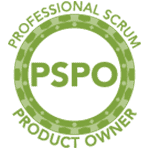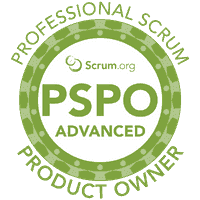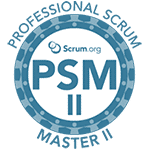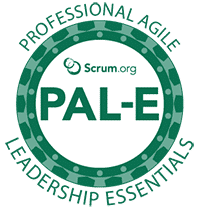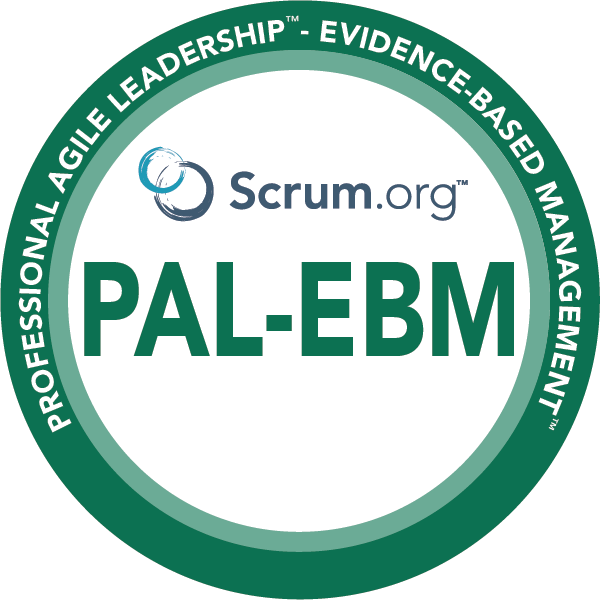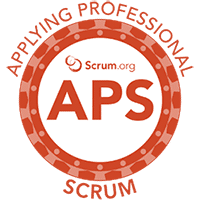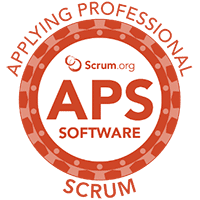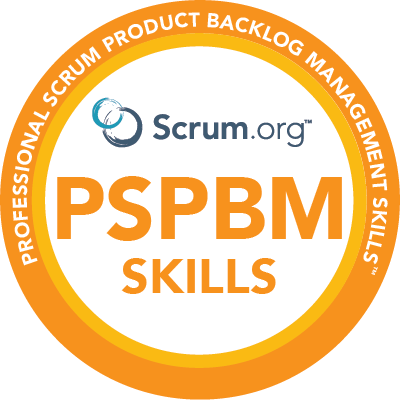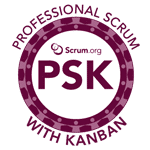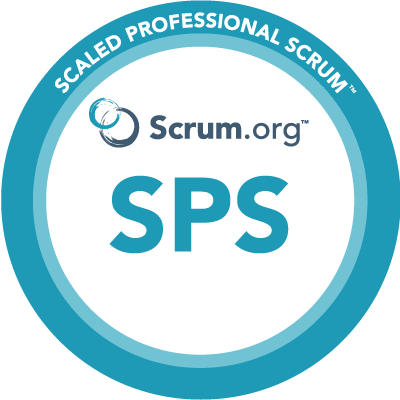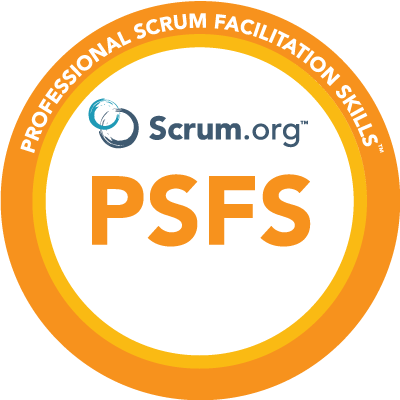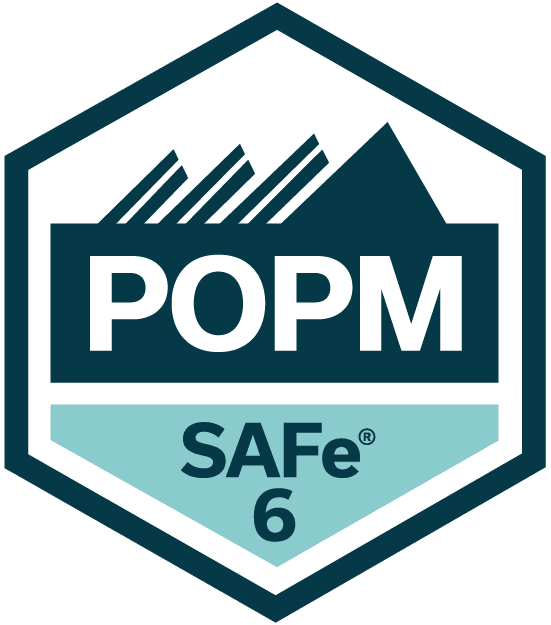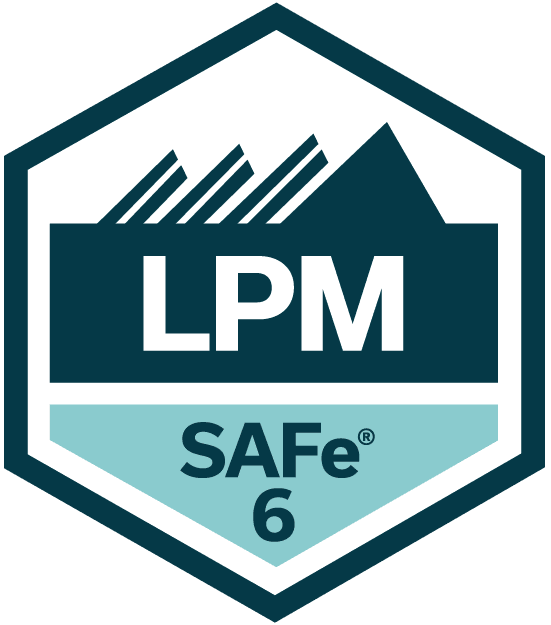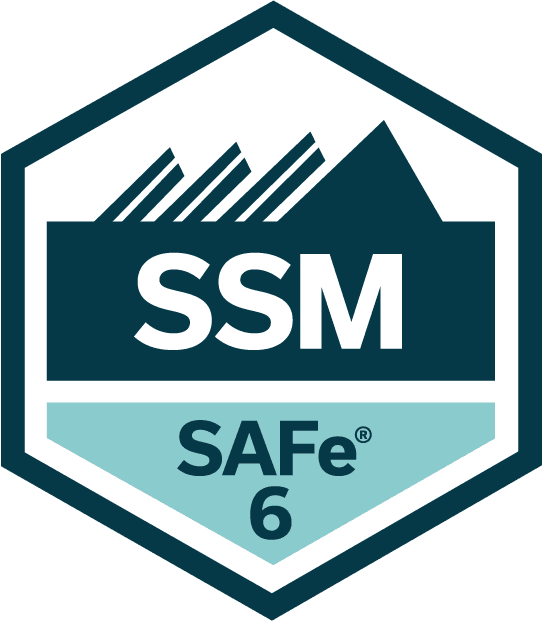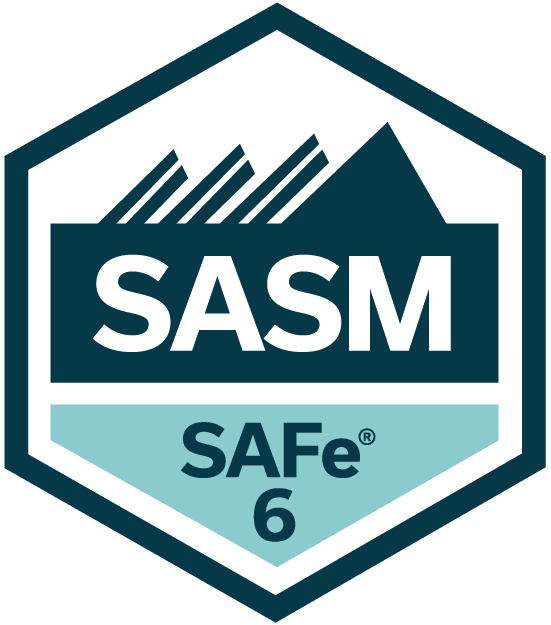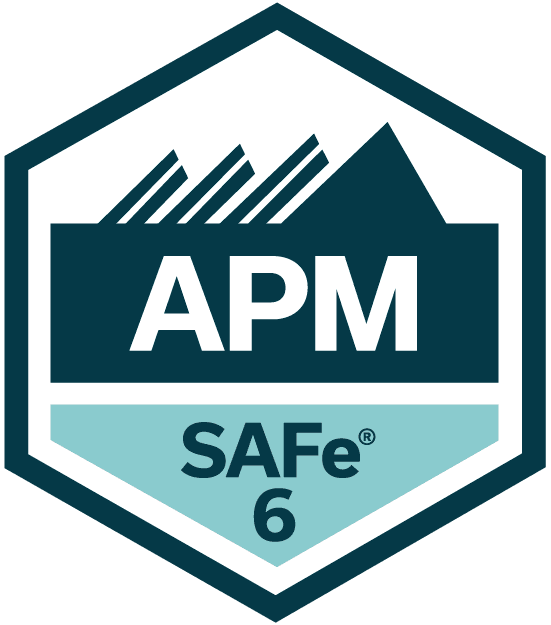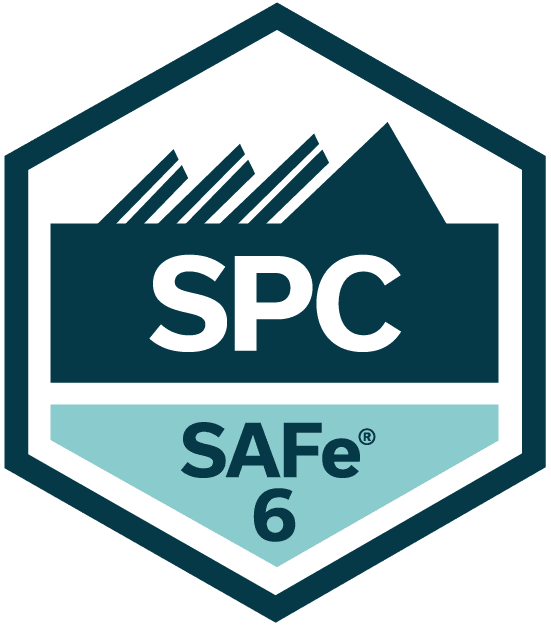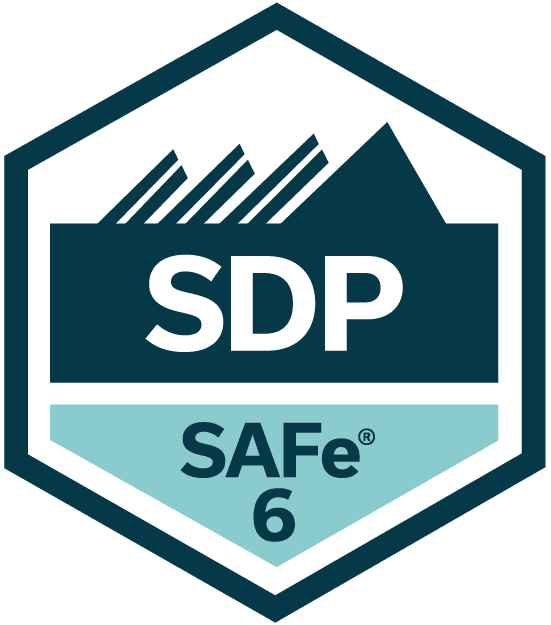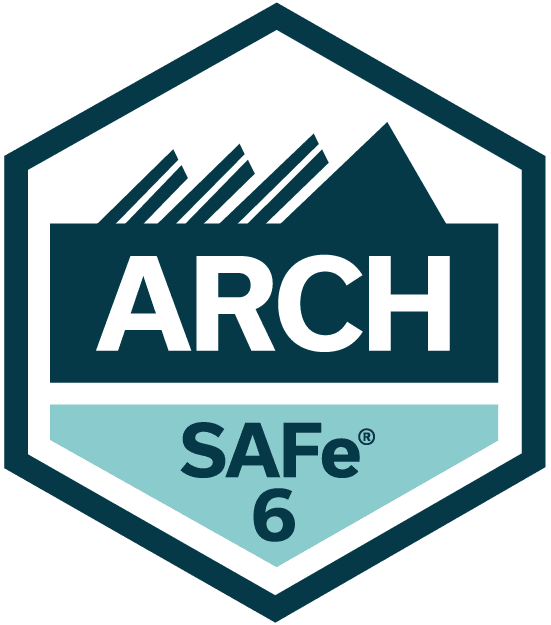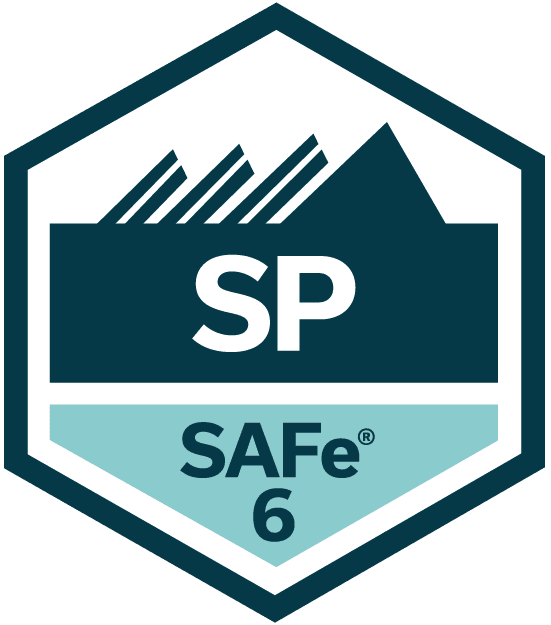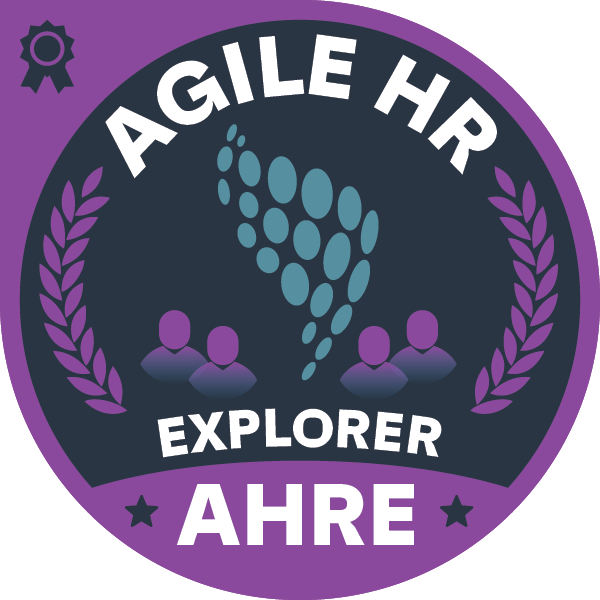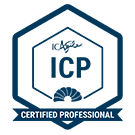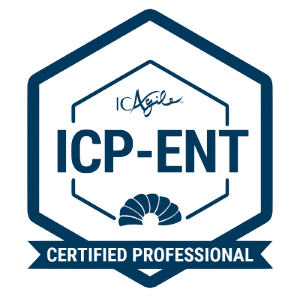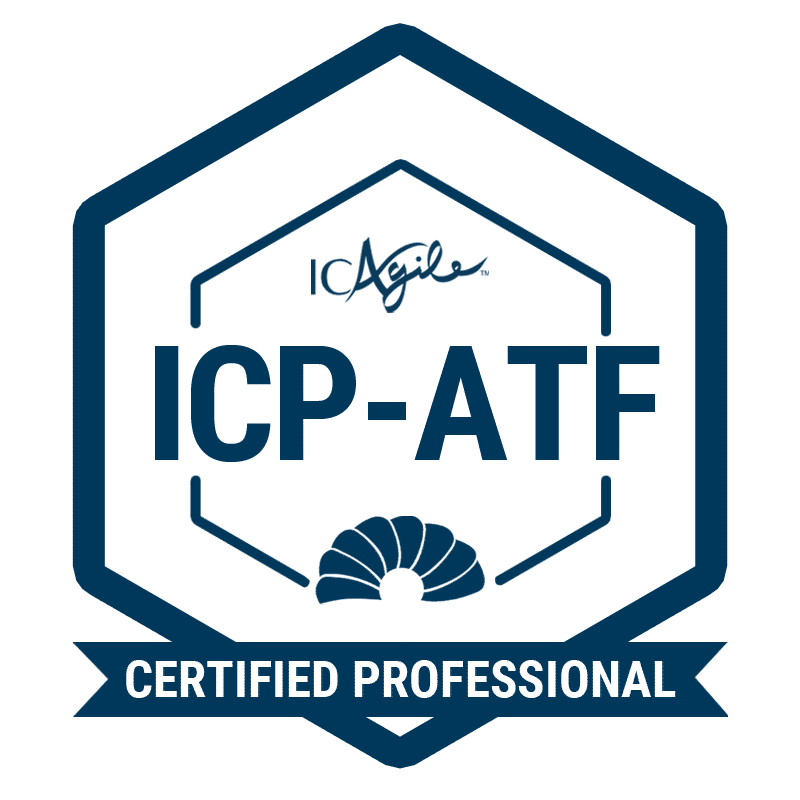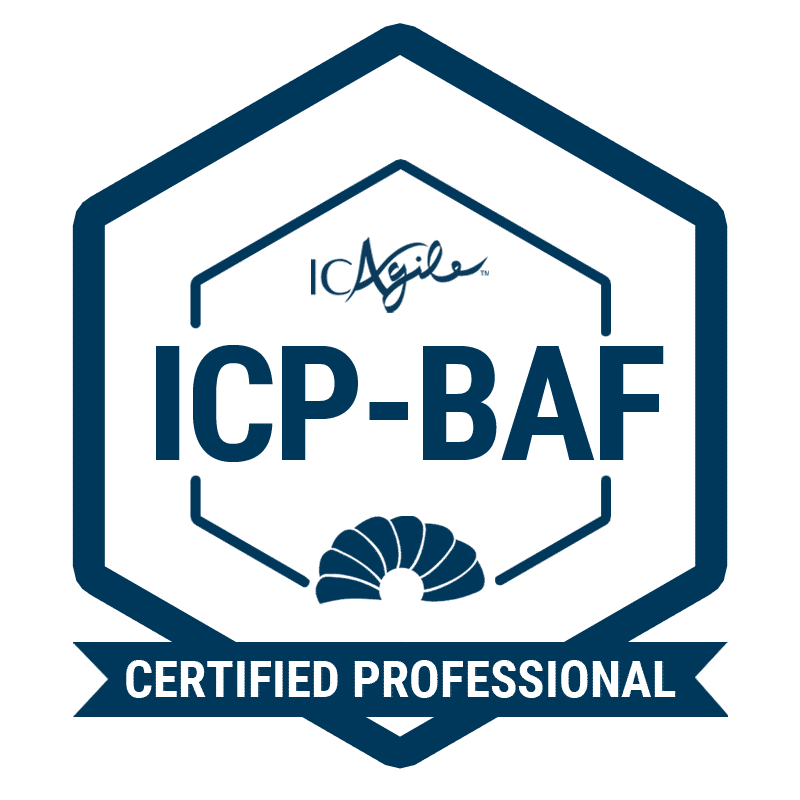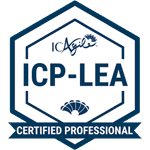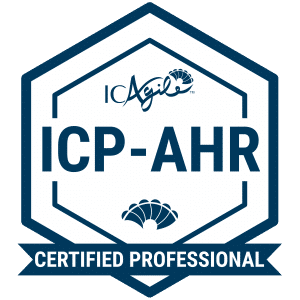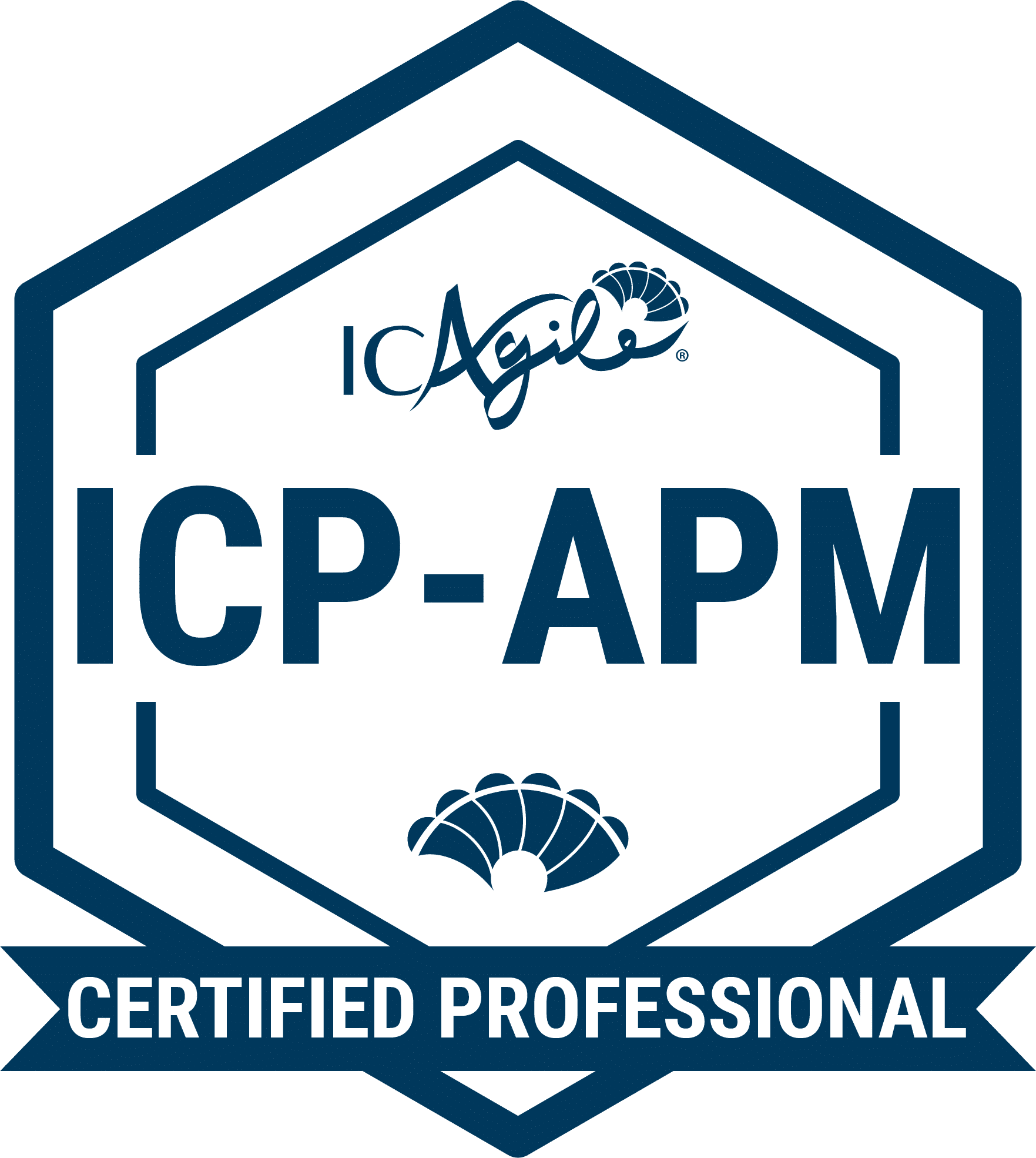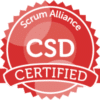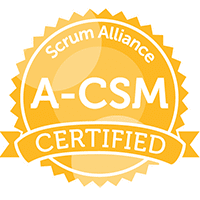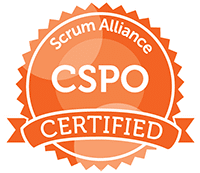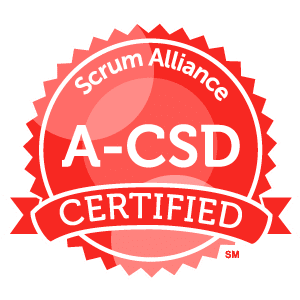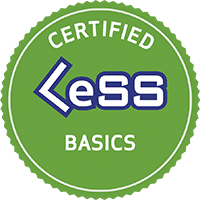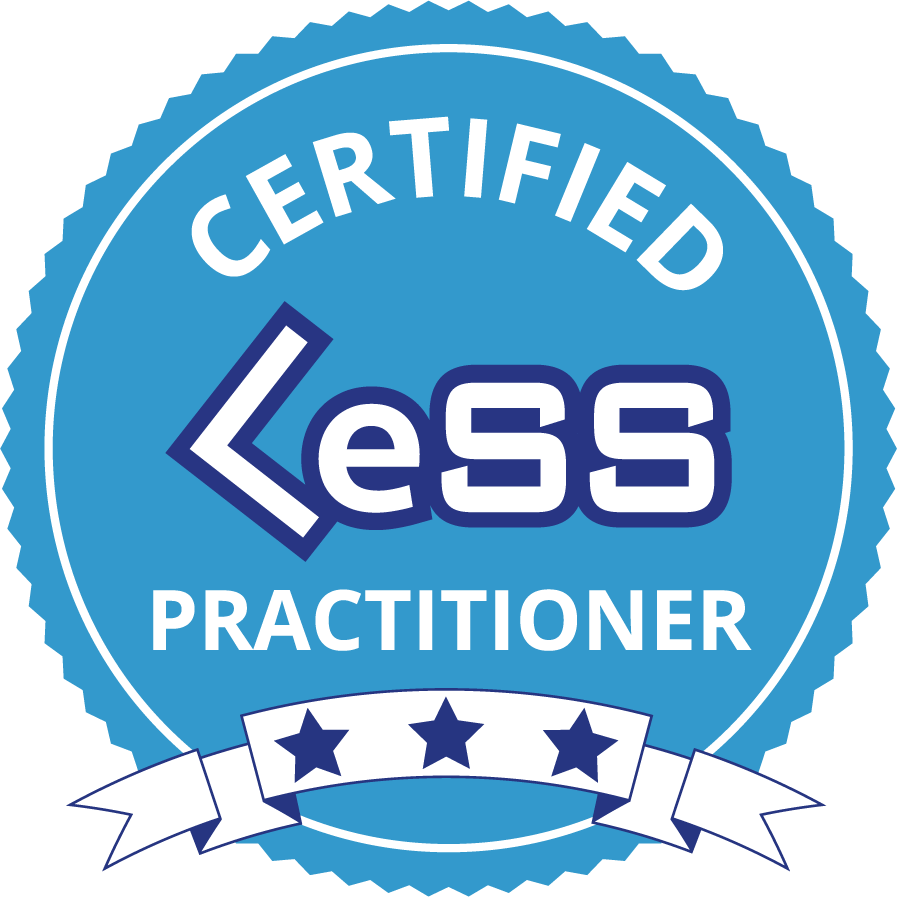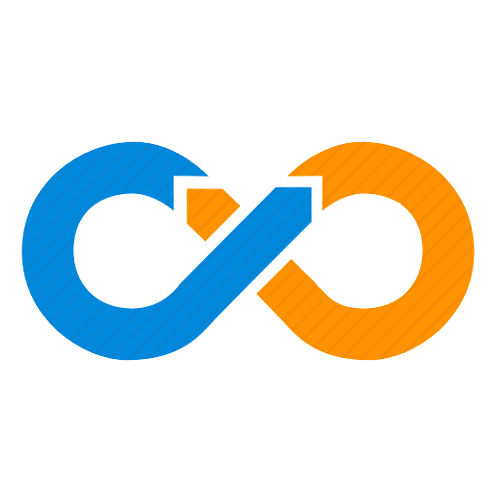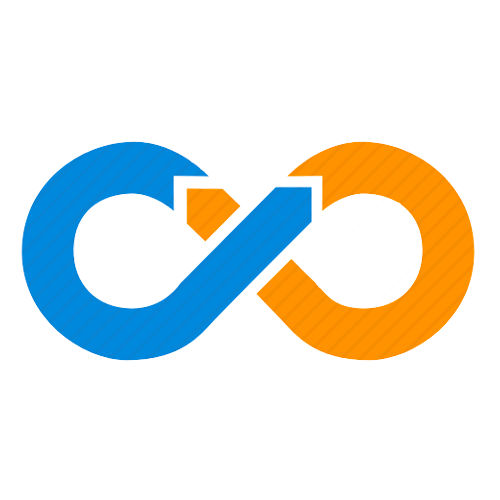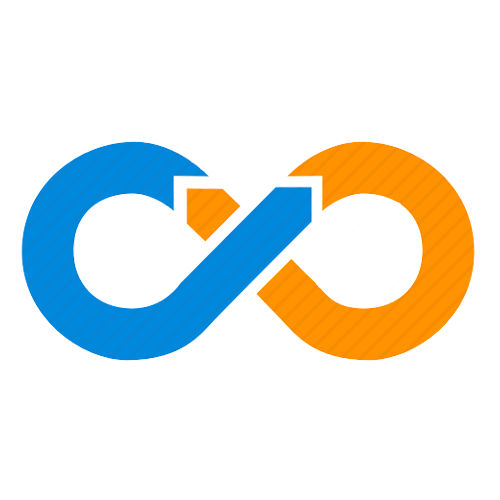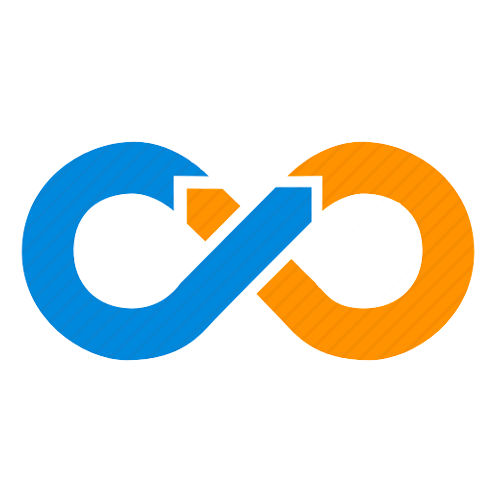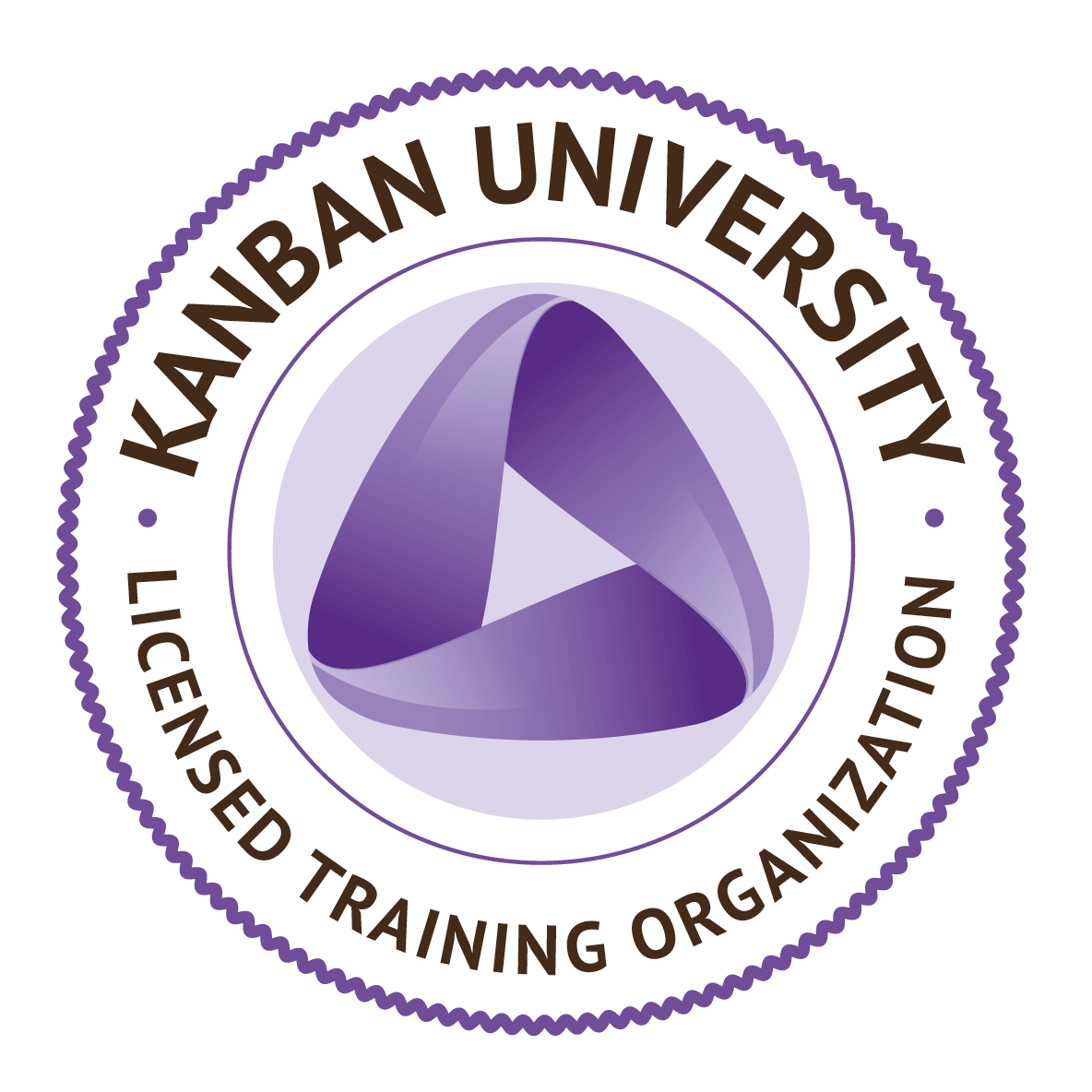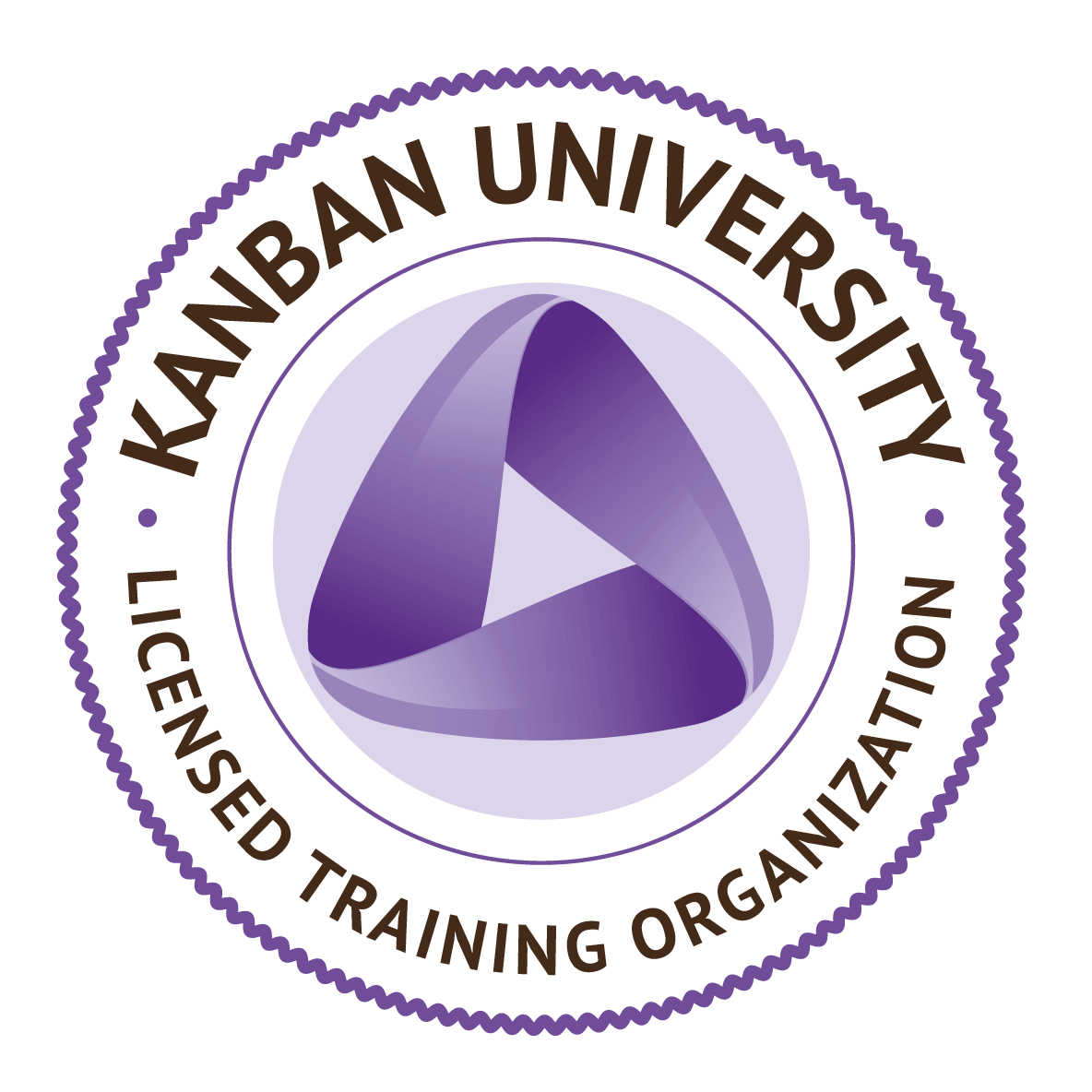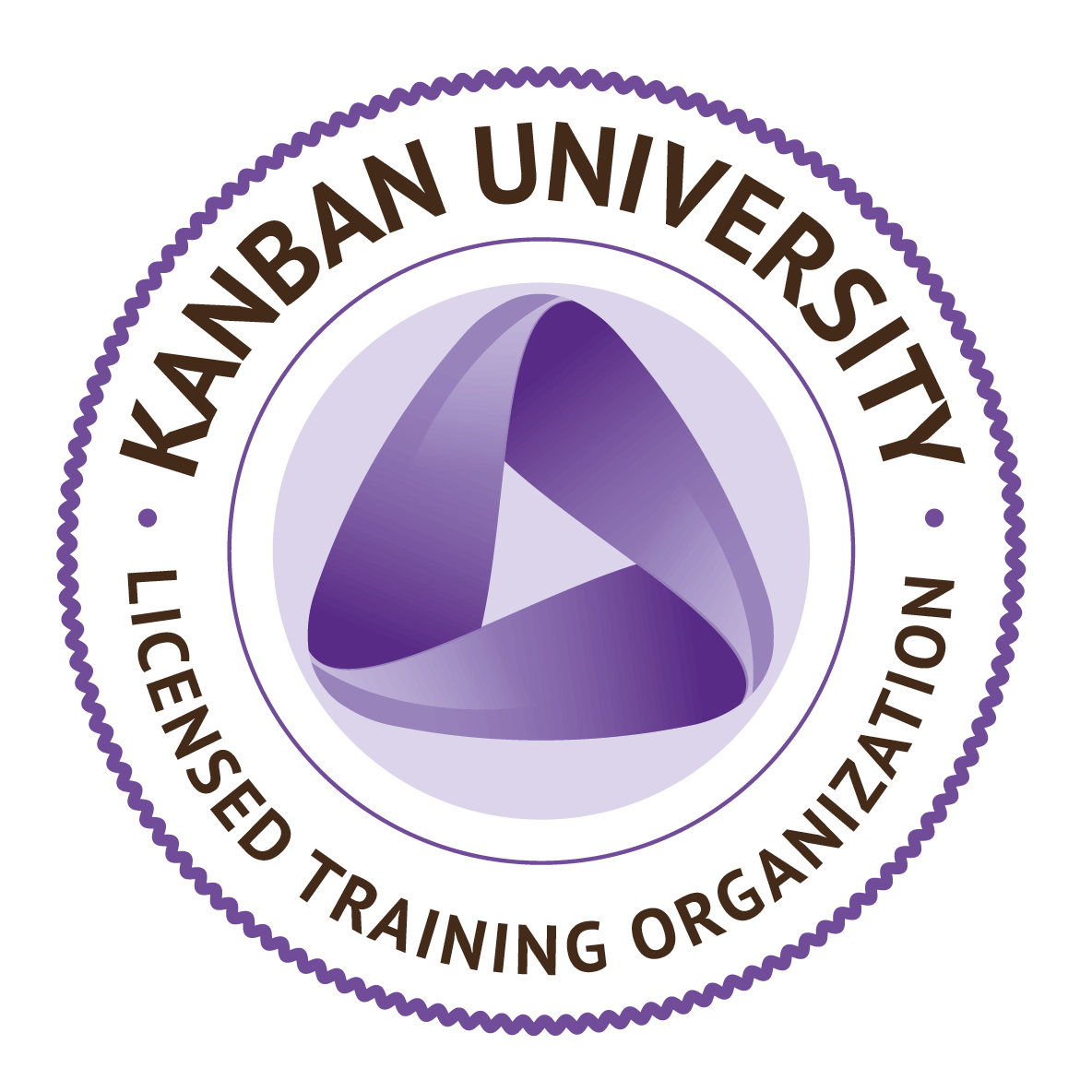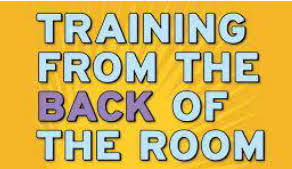A
5 Whys
The 5 Whys is a result-oriented problem-solving technique that examines the cause-and-effect relationships that is the root of a specific problem that is an aspect of Inspect and Adapt.
Acceptance Criteria is the set of predefined conditions that must be fulfilled to ensure that the product fulfils end-user's expectations. View More
ATDD is a development methodology that promotes good collaboration between the business and technology group. Many similar methodologies work more or less the same way like Behaviour Driven Development (BDD), Example Driven Development (EDD) and Specification by Examples, etc. View More
Actual Business Value
Actual Business Value is the sum business value evaluated based on objectives inclusive of stretch objectives during the completion of Planning Interval.
Agile is a collection of values, principles, and practices for iterative development as described by the Agile Manifesto. View More
Agile Contracts
Agile Contracts are contracts where the supplier and customer ascertain the common beliefs in consensus like business value, implementation perils, expenditure and costs.
Agile Manifesto is the formative document describing the four values and 12 principles of Agile Software Development. View More
Agile Product Delivery is a customer-first approach to define, build and release a continuous flow of valuable services and products to users. View More
Agile Program Management Office
The Agile Program Management Office is an organizational wing that helps in the smooth facilitation of the Lean Portfolio Management Process and nurtures the operational excellence and lean governance that entails Lean-Agile transformation.
Agile Release Trains
Agile Release Train is an Agile team formed out of several Agile teams(50-125 members) that have the expertise needed to implement, test, deploy, and release to deliver software or other product.
The ultimate purpose of ARTs is to deliver effective solutions to customers. It's fundamental for establishing a fast flow of solution features. ARTs develop solutions iteratively, constantly engaging with the customer and adjusting their course of action toward an optimal solution. Understanding their responsibilities is critical for success. To this end, a 'responsibility wheel' was created for ARTs to clarify their duties at-a-glance that include: connecting with the customer, planning the work, delivering value, getting feedback, improving relentlessly.
An Agile team refers to the cross-functional team which consists of 5-11 members who are responsible for executing the Agile project. View More
AI (Artificial Intelligence)
Artificial Intelligence (AI) is a term used to describe a wide range of smart machines capable of performing tasks that typically required human intelligence. AI can be applied at all levels of SAFe to build intelligent customer solutions, automate value stream activities, and improve customer insights.
Architectural Runway
Architectural Runway is the current technical infrastructure, code, and components needed to implement the forthcoming features without much redesign or delay.
Architect Sync
Architect Sync is a solution train event to maintain uniformity in how rising designs and tradeoffs are handled in the Solution Train enabling regular opportunities to drive implementation approaches without causing huge delays.
ART Backlog
The ART Backlog is the waitlist area for upcoming Features, which are intended to describe user needs and offer business benefits for a single Agile Release Train (ART). It also contains the enabler features mandatory to develop the Architectural Runway.
ART Flow
ART Flow describes a state where an ART delivers a continuous flow of valuable features to the customer.
ART Kanban
ART Kanban is a visualization method to manage the flow of features and capabilities from ideation to evaluation, application, and release via the Continuous Delivery Pipeline.
ART PI Risks
ART PI Risks are the risks and obstacles identified by the Agile team during the PI planning that could impair their ability from fulfilling business objectives.
ART Planning Board
The ART Planning Board underlines the Planning Interval's feature delivery date, feature dependencies among teams, and important milestones.
ART Predictability Measure
The ART Predictability Measure measures the difference between original plans and actual outcomes (i.e., reality) of a project and is used to assess the performance of ART's projects in tuning their forecasts more accurately.
ART Sync
ART Sync is an Agile Release Train event that merges Product Owner sync and Scrum of Scrums (SoS).
B
Backlog Refinement is the practice of adding details, estimates, and orders to backlog items. View More
Baseline Solution Investments (BSIs)
Baseline Solution Investments (BSIs) refers to the costs bore by each value stream as it builds, assists, and runs the solutions that deliver the present business capabilities.
Batch Size
Batch Size is a metric for measuring the amount of work i.e. the requirements, design, code, tests, and other work-related items are added to the system during a particular period of time.
Behaviour Driven Development Training (BDD) is a process that promotes collaboration between developers, testers, and customer service personnel during product development. View More
Benefit Hypothesis
Benefit Hypothesis is the suggested measurable benefit to the customer when it comes to a feature or ability.
Big Visible Information Radiator (BVIR)
Big Visible Information Radiator (BVIR) is a graphical representation that monitors and communicates important data at an instance. It includes graphs like burndown charts, program boards, build status boards.
Built-In Quality
Built-In quality is the practice of ensuring that quality is ensured at each level of development. It is a lean-agile principle that advocates that maintaining quality is everyone’s responsibility and this helps in avoiding the costs of a recall, rework,and defect fixing as it passes through every value stream.
Burn Down and Burn Up charts show the amount of work completed against time. View More
Business Agility is the ability to excel in the digital age by swiftly responding to market changes and lucrative opportunities with the help of digitally driven business technology. View More
Business Agility Value Stream (BAVS)
The newly introduced BAVS has been added to the top of the Big Picture, leading the way for competing and thriving in the digital age. It helps organizations quickly respond to market changes and emerging opportunities with innovative, digitally enabled business solutions.
Business and Technology
Business and Technology in the context of SAFe® depicts the role of functional domains in all aspects of the organization promoting business agility by regularly finding new ways to apply Lean-Agile principles and practices. The significantly updated Business and Technology in SAFe® 6.0 highlights five business and technology patterns including business-enabled ARTs, launching business trains, creating an Agile executive team, applying SAFe to other business functions, and combining development and operational value streams within the same portfolio.
Business Context
Business Context is a PI planning agenda explained by a business owner that depicts the existing state of business, shares the portfolio vision, and gives a view on how the current solutions are serving their customer needs.
Business Model Canvas
Business Model Canvas is a synopsis limited to one page containing the core strategic information required to successfully launch a product or service in the market.
Business Owners
Business Owners are a small group of stakeholders who are primarily responsible for the business and technical governance, compliance, and ROI for a solution built by the Agile Release Train(ART). They are the prime stakeholders who are a part of the ART who must certify the ART for usage and take part in ART events.
Business Value
Business Value refers to trust, collaboration, and alignment in SAFe®.
C
Cadence and Synchronization
Cadence refers to the duration of sprint, iteration and a PI while synchronization refers to various events happening at once.
CALMR
CALMR is a DevOps concept that stands for C-Culture of Shared Responsibility, A- Automation of Continuous Delivery Pipeline, L – Lean Flow accelerates delivery, M – Measurement of flow, quality, and value, R – Recovery reduces risk and preserves value. It is a mindset that assists Agile Release Trains to achieve continuous value delivery by enabling parallel improvements in delivery culture, automation, lean flow, measurement, and recovery.
Capabilities
A Capability is a larger-level solution that normally covers numerous ARTs. Capabilities are divided into numerous features to ease their implementation in one PI.
Capacity Allocation
Capacity allocation is a budgeting method in which the backlog of new features, enablers, and technical debt for the upcoming program increment (PI) is balanced.
Coach Sync
Coach Sync, formerly known as Scrum of Scrum, is an Agile Release Train event that helps facilitate ART reliance and directs visibility into progress and the hurdles.
Committed PI Objectives
The Committed PI Objectives are SMART objectives that are created as a result of discussions between the Business Owners, Helpers. and Team. It is the result of a collaborative effort where each partner involved contributes to the discussion so that all project requirements are far better understood and ultimately defined in the form of SMART PI Objectives!
Communities of Practice (CoPs)
Communities of Practice(CoPs)are organized networks of people who share a common passion for something and regularly interact to share best practices and knowledge, as well as advance their chosen focus.
Compliance
Compliance refers to the practice, activities, and artifacts that enable teams to apply Lean-Agile development methods to develop systems that have superior quality while also meeting any regulatory or industry standards.
Confidence Vote
Confidence Vote is an activity undertaken at the end of the PI Planning session to see how confident the teams were in achieving PI objectives.
Continuous Delivery Pipeline (CDP)
The Continuous Delivery Pipeline (CDP) is the workflow, activities, and automation needed to guide a new piece of functionality from ideation to an on-demand release of value to the end-user.
Continuous Deployment
Continuous deployment is the process of deploying validated features from staging environments straight onto a production environment, where they will be released.
Continuous Exploration(CE)
Continuous Exploration (CE) is the process that spurring innovation by continually exploring market and customer needs, and defining a Vision, Roadmap, and set of Features for a Solution that addresses those needs.
The Continuous Learning Culture competency covers the importance of continuously progressing your skills to increase your competence, performance, and innovation through a wide variety of methods such as specific assignments or projects to improve employee engagement throughout the workplace. The CLC competency was added to the foundation to make it part of all SAFe configurations. Previously, it was not part of the Essential SAFe configuration. View More
Core Values
SAFe® ‘s Core Values are the main foundations that support everything SAFe® stands for. They represent the fundamental beliefs that ensure SAFe® products and services live up to their goals. The four Core Values of alignment, transparency, respect for people, and relentless improvement represent the foundational beliefs that are key to SAFe’s effectiveness.
Cost of Delay (CoD)
Cost of Delay (CoD) represents the money or value that will be lost by delaying or not doing a job at all and is used in WSJF prioritization.
Customer Centricity
Customer Centricity is the ability of the key stakeholders in a business to follow a customer-first approach to understand their needs, wants, perceptions. and desires to create a positive experience for them.
Customer Journey Map
A Customer Journey Map depicts the experiences of one who is looking to engage with a company, sorting through the operational value stream, products and services that they consider to be pertinent.
Customers
Customers are the end recipients of the value of the business solutions developed and maintained by portfolio value streams.
Committed PI Objectives
The Committed PI Objectives are SMART objectives that are created as a result of discussions between the Business Owners, Helpers. and Team. It is the result of a collaborative effort where each partner involved contributes to the discussion so that all project requirements are far better understood and ultimately defined in the form of SMART PI Objectives!
D
Decentralized Decision-Making
Decentralized Decision-Making means that decisions are made by those closest to the information. This enables decision flow as there is no need to always consult higher authority and frees you up to act swiftly with the support of an empowered team to avoid delays, improve product development flow, and enhance the decision-making ability.
Definition of Done (DoD) is a checklist of items that need to be completed so that a project or task can be declared as ‘Done’. View More
Design Thinking
Design Thinking is an innovative, customer-first development process that creates desirable products that are both profitable and sustainable.
Develop on Cadence
Develop on Cadence is a synchronized group of key events and activities that occur in a regular, predictable schedule. These are designed to provide support for agile teams by including reliable series of events and activities that occur regularly.
Development Value Streams refers to the series of activities needed to translate a business hypothesis into a digitally enhanced solution. View More
DevOps
DevOps is a combination of technical practices, tools, and cultural philosophies that help in the automation and assimilation of software development and IT services.
E
Empathy Map
Empathy Map is a design thinking tool that helps in developing a deep and empathetic understanding for their customers.
Enablers
Enablers are incredibly important to the activities involved in extending a business’s runway. Enablers range from exploration, architecture, infrastructure. and compliance to name just a few. They are captured in various backlogs throughout the Framework process and happen at many different points during it as well.
Enterprise
Enterprise refers to the business organization to which each SAFe® portfolio belongs.
Enterprise Architect
The Enterprise Architect crafts the roadmap and technology strategy that authorizes the portfolio to assist existing and future business capabilities.
The Enterprise Solution Delivery competency details the application of Lean-Agile principles and practices to the specification, development, deployment, operation, evolution (the life cycle) of software applications and cyber physical systems. Based on field experience and customer feedback, to better describe how Solution Trains manage planning and deliver solutions: Pre-Plan replaced Pre-PI planning. It describes the Solution Train activities necessary to prepare ARTs for PI Planning. Also, Coordinate and Deliver replaced Post-PI planning. This update describes the practices to deliver Large Solutions across multiple ARTs and suppliers in a Solution Train View More
Epic
An Epic is a project that requires the definition of a Minimum Viable Product (MVP) and approval by Lean Portfolio Management before implementation. Because they have such large scope, it is necessary to define an MVP for this type of project to ensure its success.
Epic Hypothesis Statement
The epic Hypothesis is a record that captures, groups, and informs vital information about an epic.
Epic Owners
Epic Owners are responsible for coordinating portfolio Epics through the Portfolio Kanban system. They collaborate on defining and approving, implementing portfolios of work- in other words, they make sure that each project is spaced out over time to avoid too much pressure and overwhelm.
Essential SAFe®
Essential SAFe® is a small set of roles, events, and artifacts needed to seamlessly provide business solutions through an Agile Release Train(ART) as multiple agile teams.
Estimating Poker is a technique for comparatively estimating the size of stories, features, and Weighted Shortest Job First (WSJF) in SAFe®. View More
Extreme Programming (XP)
Extreme Programming (XP) is a collection of Agile software engineering practices developed by Kent Beck that enhance software quality and responsiveness to evolving customer requirements.
F
Features
A feature is a service that satisfies a customer’s need. Every feature has a benefit hypothesis and acceptance criteria. All features are divided as deemed fit to be released by a single Agile Release Train(ART) in a Program Increment (PI).
Final Plan Review
The Final Plan Review is a meeting where the teams show the final plans containing PI objectives, loads, and risks for informing the Agile Release Train and approval by the business owners.
Foundation
The Foundation is made of the guiding principles, values, mindset, implementation assistance, and leadership positions required to deliver value successfully at scale.
Full SAFe® is the definitive configuration containing the seven core competencies that are a prerequisite for business agility. View More
G
Gemba
Gemba is a Japanese term that means ‘the actual place’. Gemba Walk is a practice of walking the shop floor or workshop to view how the process is done by the stakeholders in the operational value streams to find opportunities for continuous improvement.
H
Hackathon
Hackathon is an innovative event where team members have the freedom to work wherever they want and with whomever, they want as long as they are working on fulfilling the company’s mission and exhibit their work to the organization on completion.
I
Innovation and Planning Iteration
The Innovation and Planning Iteration occurs during every program increments (PI) and serves multiple purposes. For example, it acts as an estimating buffer for meeting the Program Objectives, providing dedicated time for innovation, continuing education, planning, and Inspect and Adapt events.
Inspect and Adapt (I&A)
The Inspect and Adapt (I&A) is an important event that takes place at the end of each Program Increment. Teams then reflect on problems they’ve identified by completing a structured problem-solving workshop.
Integration Point
An integration point combines different solutions to help stakeholders be assured that the solution will address future needs and integrate seamlessly into an evolving pull event.
Investment Horizons
The Investment Horizons solution is a tool that helps value stream owners and fiduciaries make more informed investment decisions by aligning portfolios with strategic themes while promoting overall health and growth.
Iteration
Iteration is a short period of time where agile teams work to deliver incremental value. The time period can last from 7- 30 days.
Iteration Execution
Iteration Execution refers to the management of work throughout the sprint which leads to optimum quality, working, incremental build.
Iteration Goals
An Iteration Goal is a sophisticated synopsis of the business and technical goals that teams agree to accomplish in an iteration. It guides not only team members, but also management during ARTs. In an Agile Release Train (ART), they are vital to coordinating self-organizing, self-managing teams.
Iteration Planning
Iteration Planning is a meeting held by agile teams to determine the work they can complete in an upcoming Iteration. The team members vote on which product backlog items they want to commit to so that the backlog is prioritized for the next iteration.
Iteration Retrospective
Iteration Retrospective is a common event that regularly happens where team members discuss the outcome of the iteration, reflect on the practices, and come up with ways to improve.
Iteration Reviews
Iteration Reviews are occurrence-based events, where a team meets at the end of every iteration to assess progress and then adjust its backlog for the next one.
K
Kanban
Kanban is a visual workflow method that measures work as it passes through various stages of development.
Knowledge Worker
Knowledge Workers are members who possess the skill, expertise, and education necessary to solve intricate problems in their domain of expertise.
L
Large Solution SAFe® narrates additional roles, practices, and guidance to build and evolve world-scale applications, networks, and cyber-physical systems. View More
Lead Time
Lead Time refers to the amount of time taken from the start of the process till its completion.
Lean Agile Center of Excellance
The Lean-Agile Leadership Center of Excellence (LACE) is a small, dedicated team to drive Lean-Agile transformation and thinking.
Lean-Agile Mindset
The Lean-Agile mindset is represented by the five principles of Lean Thinking and the Agile Manifesto.
The 5 principles of Lean thinking include:
- Precisely specify value by product
- Identify the Value Stream for each product.
- Make value flow without interruptions.
- Let the customer pull value from the producer.
- Pursue perfection.
And the 4 Agile values are:
- Individual and interactions over processes and tools
- Working software over comprehensive documentation
- Customer collaboration over contract negotiation
- Responding to change over following a plan
Large Solution SAFe narrates additional roles, practices, and guidance to build and evolve world-scale applications, networks, and cyber-physical systems. View More
Lean Budget Guardrails
Lean Budget Guardrails reports the policies and practices for budgeting, spending, and governance for a specific portfolio.
Lean Budgets
Lean Budget is a Lean-Agile perspective to financial administration which upticks throughput and productivity by minimizing the overhead and costs related to project cost accounting.
Lean Business Case (LBC)
Lean Business Case is a feeble practice to depicting epics inclusive of their Minimum Value Proposition and guarded business value.
Lean Governance
Lean Governance is the one aspect of Lean Portfolio Management that assists oversight and decision making of expenditure, audit, compliance, forecasting expenses, and measurement.
Lean Quality Management System (QMS)
A Quality Management System (QMS) oversees practices, policies, and procedures necessary to mandate safety and efficacy. SAFe organizations switch from traditional to QMS.
Lean Thinking
Lean is a philosophy and movement regarding improving efficiency and effectiveness by reducing waste. This includes being able to accept or reject activities that do not add a unique value to the product scope.
Lean User Experience Lean (UX)
Lean UX is a practice, philosophy, mindset, and design thinking that follows the Lean-Agile principles. It applies functionality minimum viable increments and ascertains success by measuring results over the benefit hypothesis.
Little’s Law
Little’s law states that the average wait time for service will be equal to the ratio of the average number of customers to the system throughput rate.
LeanAgile Mindset
Lean-Agile Mindset is the sum of beliefs, assumptions, attitudes, and actions across all SAFe leaders and practitioners who embrace the concepts of the agile manifesto and lean thinking. It’s a primary focus of leadership in adopting, understanding, and applying Lean-Agile relevant principles and practices.
M
Measure & Grow
Measure & Grow is the method portfolios assess their progress en route to achieving business agility and identify steps needed for improvement.
Metrics are universally accepted measures used to assess the progress of the organization towards achieving the portfolio, large solution, ART, and the Agile team’s business and technical objectives. View More
Milestones
Milestones are used to measure progress against a benchmark such as an event or goal. The three significant milestones are- Program Increment(PI), fixed date, and learning milestones.
Minimum Marketable Feature(MMF)
MMF is the bare minimum functional feature that is needed to be developed to determine if the product’s benefit hypothesis is valid or not.
Model-based systems engineering (MBSE)
Model-based systems engineering (MBSE) is a technique for developing a set of models which help define and design the system under development. These kinds of models are used frequently in software engineering. Usually, the final product is not a document but rather an MBSE model. An advantage of MBSE over traditional documents is that it provides the ability to track changes easily and update them throughout the life cycle of a project. Additionally, stakeholders can understand complex concepts more quickly with MBSE.
Modified Fibonacci Sequence
A Modified Fibonacci Sequence (1, 2, 3, 5, 8, 13, 20, 40, 100) is used during relative estimation to review the innate unpredictability as the job size estimated becomes larger.
Minimum Viable Product (MVP)
Minimum Viable Product(MVP) is the prototype of a product with basic features released in the market so that early customers can use and provide critical feedback of the product.
N
Nonfunctional Requirements (NFRs)
Nonfunctional Requirements (NFRs) describe system attributes like security, reliability, performance, maintainability, scalability, and usability. They are limitations to the design of the system backlogs.
G
Objectives and Key Results (OKR) are a great way to define, organize, and communicate critical information about a strategic theme. OKRs help set goals and track their progress through concrete, specific, measurable actions. View More
Operational Value Streams are the series of activities needed to ensure that product or service is delivered to the customer. View More
Organizational Agility
The Organizational Agility competency describes how well a business can adapt their organization under the changing demands of the environment in which the business is operating to be able to provide outstanding customer experiences and quality products. This also exhibits Lean Thinking ability.
Organizational Change Management
Organizational Change Management is a collective term for all practices and activities to help teams, groups, and individuals in thinking about, discussing, and implementing change in the organization.
P
Pareto Analysis
Pareto Analysis is a technique used during an Inspect & Adapt event to zero down the number of actions that produce the most important overall effect.
Participatory Budgeting
Participatory Budgeting (PB) is the process that Lean Portfolio Management (LPM) uses to assign the funds available to each value stream, ensuring they are being used optimally across your organization’s projects.
Personas
Personas are a fictional representation of your target based on real-life customer data.
Phase Gates
Phase Gates are conventional milestones used in governance that are switched in SAFe® by milestones based on the objective evaluation of working systems.
PI Objectives
Program Increment Objectives is a synopsis of the business and technical goals that an Agile Team or ART plans to achieve in the forthcoming PI.
Plan-Do-Check-Adjust
Plan-Do-Check-Adjust (PDCA) is a four-step method based on iterations used in keeping variability in check and making adjustments after acting on feedback during product development.
Planning Poker
Planning Poker is an estimation technique based on consensus that helps teams estimate the time and effort required to complete every user story within each backlog.
Portfolio
A SAFe® portfolio synchronizes strategy with execution through the creation of agile development streams, which are established on a common governance model imbued with enterprise-wide value. Streams ensure that each solution the enterprise needs to accomplish its business mission is ideally composed of one or more products.
Portfolio Backlog
The Portfolio Backlog is one of the highest-level backlogs in SAFe®. It provides a holding area for upcoming business and enabler epics that are intended to create and evolve a deep set of solutions.
Portfolio Canvas
The Portfolio Canvas outlines the development value streams that are included in an Agile portfolio, the value propositions and the solutions they deliver, the customers they serve, a progress tracker for each value stream, dependencies between different solution-levels of each value stream, KPIs to track and improve upon, as well as other key activities and events required to achieve the portfolio vision.
Portfolio Kanban
Portfolio Kanban is a way to picturize and manage the flow of portfolio Epics, from ideation through analysis, implementation, and completion.
Portfolio SAFe®
Portfolio SAFe® syncs strategy with implementation and groups solution development around the flow of value through one or multiple value streams.
Portfolio Vision
The Portfolio Vision is a detailed account of the future state of a portfolio’s Value Streams and Solutions, which describe how they will work together to achieve the portfolio’s objectives within the Enterprise.
Pre and Post Planning
Pre-and post-program increment planning events allow for teams to prepare for and follow up after program increment planning. There are two format types, Agile Release Trains (ARTs) and Suppliers in a Solution Train (SIS).
Problem Solving Workshop
The Problem Solving Workshop is a sub-event of Inspect and Adapt (I&A), which is a methodical approach to identifying the root cause of problems.
Product Management
Product Management is a function spanning the whole organization that includes new product development, business justification, planning, verification, forecasting, pricing, product launch, sales, and marketing of a product at all stages of the product lifecycle.
A Product Owner is a key individual who is responsible for delivering superior quality products to the end-users within the deadline. The product owner is tasked with optimizing the business value of a product by creating and maintaining the product backlog. View More
Product Owner Sync
The Product Owner Sync is an ART event to have a product-level check-in for how well the project is progressing toward meeting its PI objectives and discuss any problems or opportunities with feature development. During the sync, you’ll be able to assess any scope adjustments that need to be made to ensure that our project is still achieving business value.
PI Planning
PI Planning is the pulse of the Agile Release Train which is face to face event based on a cadence that aligns all teams on the ART to a common vision and mission.
Planning Interval
A PI is the amount of time given to a specific Agile Release Train (ART) to complete any outstanding work that has been delegated from a Product Increment (PI). It’s usually 8–12 weeks period during which you want to release your feature so it can be tested and accepted by your audience. The most popular method for distributing PIs among teams is 4 weeks each for development, followed by one week where you innovate and plan for the next few PIs.
PI Planning Readiness
This is a continuous process where the program backlog is refined for content readiness. The objectives of this event are: Management alignment and organizational readiness for planning, Backlog and content readiness, and Facility readiness—the actual logistics for the event
PI System Demo
The PI System Demo is the final demo of all the work done by the entire ART in all the iterations. It is the first part of the Inspect & Adapt event. PI System Demo is different from the regular system demos that happen after every iteration, in that it is intended to show all the Features that the ART has developed over the course of the PI. Usually it has bigger audience with customers or Portfolio representatives more likely to attend. Therefore, the PI system demo tends to be a little more formal, and some extra preparation and staging are usually required. Like the other events this too should be timeboxed to an hour or less, with the level of abstraction high enough to keep stakeholders actively engaged and providing feedback.
Q
Qualitative and Quantitative Analysis
This is the second part of the Inspect & Adapt event. The ART collectively reviews any quantitative and qualitative metrics they have agreed to collect, then discuss the data and trends. In preparation for this, the RTE responsible for gathering the information, analyzes it to identify potential issues, and facilitates the presentation of the findings to the ART. One primary metric is the program predictability measure. Each team’s planned vs. actual business value is rolled up to create the program predictability measure. Predictability helps the business to plan effectively.
R
Refactoring
Refactoring is the activity of enhancing the internal structure or operation of a code or component by retaining its external behavior.
Relative Estimation
Relative Estimation draws a comparison between jobs to swiftly estimate their value and size.
Release on Demand
Release on Demand is the process of launching new functionality into production and releasing it immediately to customers.
Release Train Engineer (RTE) is a coach and servant leader for the Agile Release Train (ART). Agile Release Train (ART) is a self-organizing team of Agile teams. View More
Relentless Improvement
The fourth core principle of the SAFe® House of Lean is Relentless Improvement. It encourages learning and growth through continuous reflection and process enhancements.
Risk ROAMing
Risk ROAMing is a planning session that is a part of Program Increment where program risks highlighted by teams are discussed in a larger management setting.
Roadmap
A Roadmap is a programme of events and milestones that convey planned Solution deliverables over a planning horizon.
Root Cause Analysis
A Root Cause Analysis uses a set of problem-solving tools to determine the real causes of an issue as a part of the Inspect and Adapt event.
S
SAFe Backlog
Each backlog is visualized in a Kanban system. It is done to simplify guidance and remove redundancy. Changes as per SAFe® 6.0 include: Removing the vertical Kanban label from all backlog icons and changing the Backlog state in all Kanban systems to ‘Ready,’ which reduces the confusion between the Kanban state and the backlog itself.
SAFe® Big Picture (BP)
The SAFe® Big Picture is a pictorial representation of the framework’s fundamental roles, activities, and artifacts used to access SAFe® articles through its clickable icons when viewed from Scaled Agile Framework® (SAFe®).
SAFe® for Government
SAFe® for Government is a collection of patterns designed to help public sector organizations successfully implement Lean-Agile practices in a government context.
SAFe® for Lean Enterprises
SAFe® for Lean Enterprises is the world’s main framework for driving business agility. SAFe® combines the prowess of Lean, Agile, and DevOps into an extensive operating system that helps enterprises prosper in the digital age by delivering disruptive products and services quickly with high predictability and excellent quality.
SAFe® Implementation Roadmap
The Scaled Agile Framework® (SAFe®) Implementation Roadmap is a graphic representation and a 12 article series outlining a strategy or a set of activities that will guide your organization through the transformation process involving the implementation of SAFe®.
SAFe® Lean Startup Cycle
SAFe® Lean Startup Cycle is a highly recurring build-measure-learn cycle for product innovation and strategic investments. It can achieve economic and strategic advantages of Lean such as managing investment and risk incrementally while leveraging the flow, visibility, and agility benefits of SAFe®.
SAFe® Practice Consultants (SPCs)
Formerly known as SAFe Practice Consultants, SPCs provide coaching for many of the practices and critical moves described in the SAFe Implementation Roadmap. They also must work beyond the roadmap as a group of change agents with unrelenting energy, bringing business agility to the organization over time through executing the areas of responsibilities.
SAFe Scrum
SAFe Scrum is an Agile framework used by agile teams within an ART to deliver customer value in a short time box. SAFe Scrum teams use iterations, Kanban systems, and Scrum events to plan, execute, demonstrate, and retrospect their work.
SAFe Team Kanban
It is a Lean-Agile method that helps Agile Teams facilitate the flow of value by visualizing workflow, establishing Work in Process (WIP) limits, delivering value continuously, measuring throughput, and improving their process. The article has been renamed from Kanban to ‘SAFe Team Kanban’ and was significantly revised to explain how to use Kanban for SAFe teams, which operate as part of an ART.
Scrum Master/Team Coach
The Scrum Master is responsible for the implementation of the Scrum framework. They ensure that the scrum principles and practices are followed. They eliminate hurdles, conduct meetings, and work with product owners. The Scrum Master/Team Coach now has broader responsibilities for optimizing flow, building high-performing teams, and supporting organizational agility. Organizations can choose the role name Scrum Master, or Team Coach, whichever is best suited for their context.Scaled Agile Framework® (SAFe®)
Set-Based Design
Set-Based Design is the art of choosing your options wisely. It enables the creation of prototypes rapidly and provides more flexibility than ever before in a design project thanks to its iterative nature. When employing set-based design, business leaders can explore multiple options, eliminating poorer choices over time as they discover better solutions all while enhancing flexibility as it applies to the development process for producing better economic results at every turn.
Silos
Silos are localized organizational constructs that optimize for operations across functional units by enforcing policies and procedures specific to their function while remaining ignorant of the larger conceptual mechanism by which value moves across different types of work. This causes errors in tracking where value scatters.
Solution
Every value stream builds multiple solutions that are products, services, systems, either intrinsic or extrinsic to the customer.
Solution Architects
Solution architects specialize in setting the stage for both technical and strategic aspects of product launches. They are the people you tend to go to when you need a high-level overview of how your products will function as a whole. If your company is launching multiple products with similar uses, it makes sense to have one solution architect work across all of them so later on down the road you know that end-users will not be confused by what each one does.
Solution Context
Solution Context finds out the important aspects of the operational environment for a Solution. It offers a vital understanding of requirements, usage, installation, operation, and support of the solution itself. Solution context rigorously influences opportunities and constraints for releasing on demand.
Solution Demo
The Solution Demo combines the development efforts of all ARTs and suppliers on the Solution Train every PI and ensures visibility to customers and stakeholders for review and feedback.
Solution Intent
Solution Intent is the place to store, manage and communicate all details related to how your solution will work. It also specifies the written specifications of behavior as well as designs that are required by adding links to functional and non-functional tests. If there are any standards or system models that need to be referenced, Solution Intent allows for it too.
Solution Management
Solution Management is entrusted to develop acceptable, realistic, viable, and durable business solutions that satisfy customer needs as time passes.
Solution Train
The Solution Train is the organizational model used to build large and complex Solutions that require the coordination of multiple Agile Release Trains (ARTs). This helps align ARTs with each other through its shared mission, vision, backlog, and roadmap, as well as a Program Increment.
Solution Train Backlog
The Solution Train Backlog is the waitlist area for all the capabilities and enablers that are next in line. Every Solution Backlog covers numerous ARTs and is destined to grow the solution and develop its architectural runway.
Solution Train Engineer
The Solution Train Engineer (STE) is a leader and a servant who also plays the role of a coach for the Solution Train enabling the work of all the ARTs and Suppliers in the Value Stream.
Solution Train Planning Board
When there are multiple ARTs in a solution, the capabilities implemented by different ARTs are displayed in a board like the ART Planning Board showing the Features implemented by different teams in different iterations. This is known as Solution Train Planning Board. It highlights the objectives, anticipated delivery dates of capabilities, significant dependencies, and any other relevant milestones, aggregated from the ART Planning boards.
Solution Train Kanban
Solution Kanban is a visual method to manage the flow of features and capabilities from ideation to evaluation, application, and release via the Continuous Delivery Pipeline.
Spanning Palette
The Spanning Palette includes different roles and artifacts that could apply to a particular team, program, large solution, or portfolio context.
Spike
A Spike is an Enabler Story that checks out the viability of a proposed technical approach, gains the knowledge necessary to understand a requirement, or optimizes the reliability of a story estimate.
Story
Story or User Story is a tool used in Agile to record the description of a software product from the end-user perspective. These user stories are divided into small phases and then developed in single sprints by Agile teams.
Story Map
A Story Map is a design thinking technique that arranges a sequence of stories as per the order of tasks a user needs to reach their goal.
Story Point
A Story point is a metric that is used to measure the difficulty in implementing a user story. It depicts volume, complexity, knowledge, and uncertainty.
Strategic Themes
Strategic themes are the distinctive elements that connect a portfolio of work to the strategy of your business. These goals inform your overall strategy and provide context for decision-making about what projects you will take on as well as how you allocate resources to keep your business moving forward.
Sunk Cost
Sunk Cost refers to the money spent and cannot be recovered.
Supplier
A Supplier is an intrinsic or extrinsic organization that builds and delivers components, subsystems, or services that help Solution Trains and ARTs offer solutions to their customers.
SWOT Analysis
SWOT Analysis is a strategic and deep assessment technique to identify the strengths, weaknesses, opportunities, and threats concerning the existing business situation as a part of a SAFe® portfolio vision.
System Architect/Engineering
System architect/engineering is a specialized position within the engineering field. It is responsible for defining and communicating a shared technical and architectural vision for an agile release train (ART). They are in charge of making sure that the system being developed can interface with other parts of the company’s systems smoothly as well as uphold its main purpose.
System Demo
A System Demo is a key event that provides a holistic view of new features for the most recent iteration delivered by all the teams in the Agile Release Train (ART). Each demo gives ART stakeholders an objective measure of progress during a program increment (PI).
System Team
The System Team is a specialized Agile Team responsible for managing and providing support regarding the development and testing of Agile-related tasks. The System Team may also manage the responsibilities of other Agile teams, perform end-to-end Solution testing where necessary, and assist with deployment and Release on Demand.
Systems Thinking
Systems Thinking takes a customer-centric approach to product development, incorporating all facets of a business and its environment into the planning, development, deployment, and management of a product or process.
Shared Services
Shared Services mean the technically skilled roles, people, and services needed for the success of an Agile Release Train (ART) or Solution Train, but can only work part-time.
T
The Team and Technical Agility competency denote the vital skills and Lean-Agile principles and practices that well-performing Agile teams and Teams of Agile teams use to develop high-quality solutions for their customers. View More
Team Backlog
The team backlog contains user stories and enablers that originate from the program backlog as well as stories that arise locally to the team’s context. It may include other work items, representing all the things a team needs to do to advance their portion of a greater product.
Team Kanban
Team Kanban is an agile project management tool created to help envision workflow in your organization. It is a tool to help limit work-in-progress and optimize efficiency.
Team Sync
Team Sync is a daily team event where each teammate shares what they did the day before towards achieving iteration goals as well as what their plans are for tackling the day’s work and any obstacles that come along with all of that.
Team Topologies
Team Topologies are the four organization types that provide a transparent framework for organizing Agile teams and ARTs
Technical Debt refers to the extra costs incurred as a result of speedy release over correct code. View More
TOWS Analysis
TOWS Analysis is used in tandem with SWOT analysis to determine strategic choices to build a better future state that is a part of SAFe® portfolio vision.
Test Driven Development (TDD) refers to the practice of writing a piece of code only if the automated test has failed. View More
U
U-Curve Optimization
U-Curve Optimization for a batch size identifies the right batch size by balancing transaction costs and holding costs.
Uncommitted Objectives
Uncommitted Objectives help with business predictability by not counting against the prioritization as well as not being part of the teams’ commitment. They are tasks that are added inside each Release and only taken into consideration whenever there is low confidence in meeting the Objective.
V
Value
Value in the context of SAFe® denotes the benefits an organization offers to its customers and stakeholders.
Value Streams are the sequence of steps needed to implement solutions that provide a seamless flow of value to the end-user.View More
Value Stream Coordination
Value Stream Co-ordination depicts the way to juggle dependencies and optimum use of opportunities that are present only in the interconnections between value streams.
Value Stream Identification is an activity that Portfolio Managers use to identify development value streams and the operational value streams they support to help management understand how these efforts affect each other. View More
Value Stream KPIs
Value Stream Key Performance Indicators (KPIs) are the quantifiable metrics used to review the performance of a value stream against its forecasted business outcomes.
Value Stream Management (VSM)
Value Stream Management is a leadership and technical discipline that promotes the optimum flow of business value through the end-to-end solution delivery life cycle.
Value Stream Mapping is an important tool to enhance the flow of value beyond the continuous delivery pipeline by eliminating the invisibility to recognize the hurdles and the factors that choke the flow of value. View More
Velocity is a metric for the measurement of user stories completed during a given time period. View More
Vision
The Vision is a narration of the future state of the Solution that is in progress. It includes customer and stakeholder needs, with the feature and capabilities stated to cater to those needs.
W
Weighted Shortest Job First First is a technique to sequence jobs to deliver the maximum value in the shortest time to maximize the economic benefits and efficient customer value delivery. View More
Work-in-Progress denotes incomplete tasks and tasks that are half done. It mismatches priorities, triggers regular context changes, and increased overheads. View More


